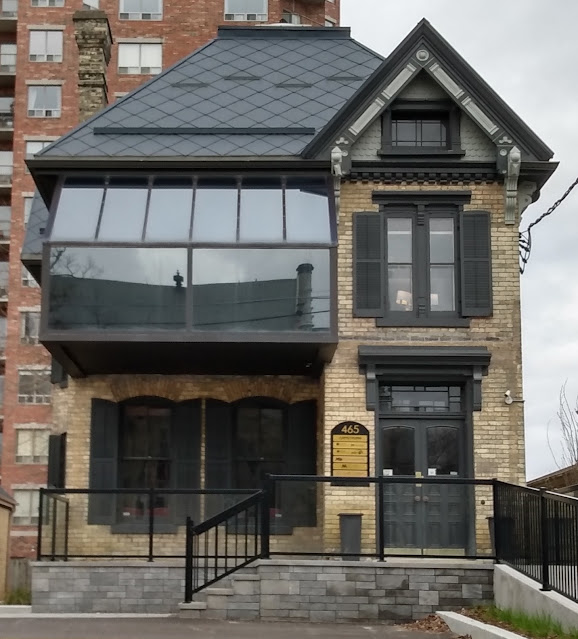Art Deco takes its name from the Exposition des arts decoratifs held in Paris in 1925. The name was eventually applied to furniture, jewelry and a host of other objects that found an immediate audience among the wealthy who could afford them. Oddly, although most people at the time couldn't pay for high fashion, interior designers or personal architects, Art Deco became the style most identified with the Jazz Age.
In architecture, Art Deco consists of plain boxes with towers and projections above the roofline. These buildings are very plain. Decoration consists of geometric mouldings and other details in terra cotta or stone relief.
 |
| Dominion Public Building on a postcard.* |
London's best example is usually considered to be the Dominion Public Building on Richmond Street, with its multiple corners, angular shape, and mouldings. Officially opening on September 26, 1936, it was, along with the Huron & Erie Building, one of the tallest structures in London at the time. Though most of it is only six storeys, its most recognizable feature is the tower on its east end. Built of smooth Queenston limestone, it's basically an early skyscraper with a long extension.
Although there was a lack of private funds, the 1930s saw much government funding. The reason was the Public Works Construction Act of 1934, an attempt to invigorate Canada's failing economy through public works projects. The City of London received $1.5 million to construct this building, which housed the post office among other federal offices. It was designed by Chief Public Works Architect Thomas W. Fuller, with assistance from London architects John MacLeod Watt, Victor J. Blackwell, and Roy O. Moore. It was built by workers in need of employment.
Another well-known edifice of the time period is the Elsie Perrin Williams Memorial Library on Queens Avenue. Most of us call it the "old Central Library."
The building was constructed in 1939-40 using funds left to the city by wealthy Londoner Elsie Perrin Williams. Engraved along the top of the front facade, you'll see the mouthful "London Public Library Elsie Perrin Williams Memorial Art Gallery and Museum." It was an unusual library for its time, incorporating an auditorium, art gallery, separate children's room, and outdoor reading garden, as well as aisles and aisles of books. In other words, it offered a variety of educational opportunities for London's citizens. It was designed by London architects Thornton McBride, and L. Gordon Bridgman, with advice from Chief Librarian Richard Crouch, for whom an east end library branch is named.










































































